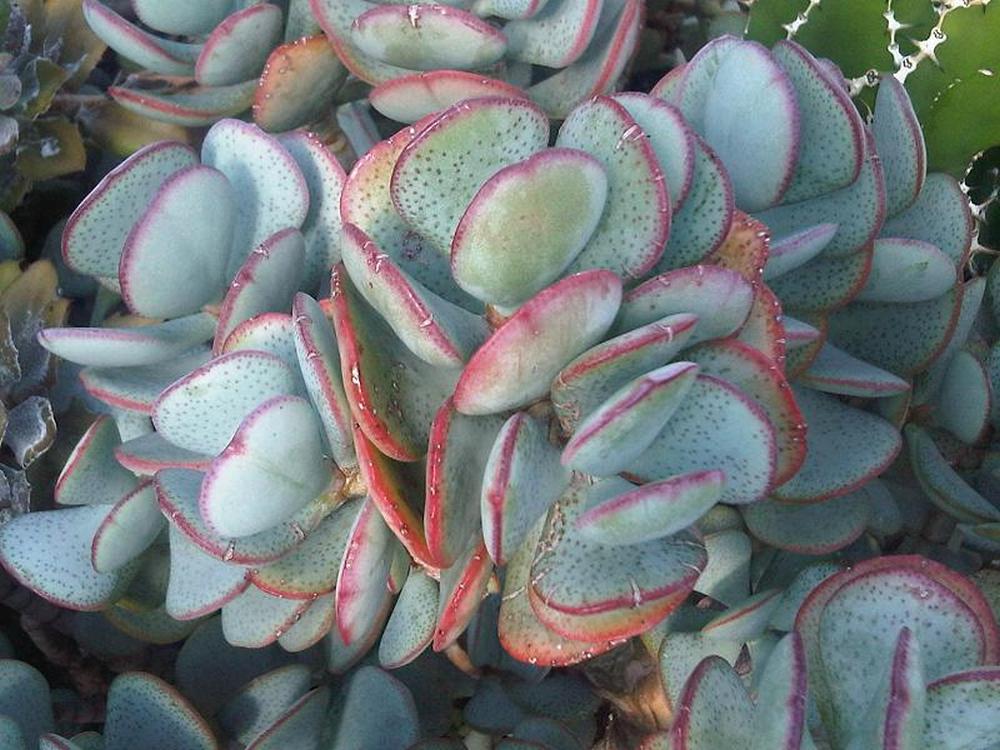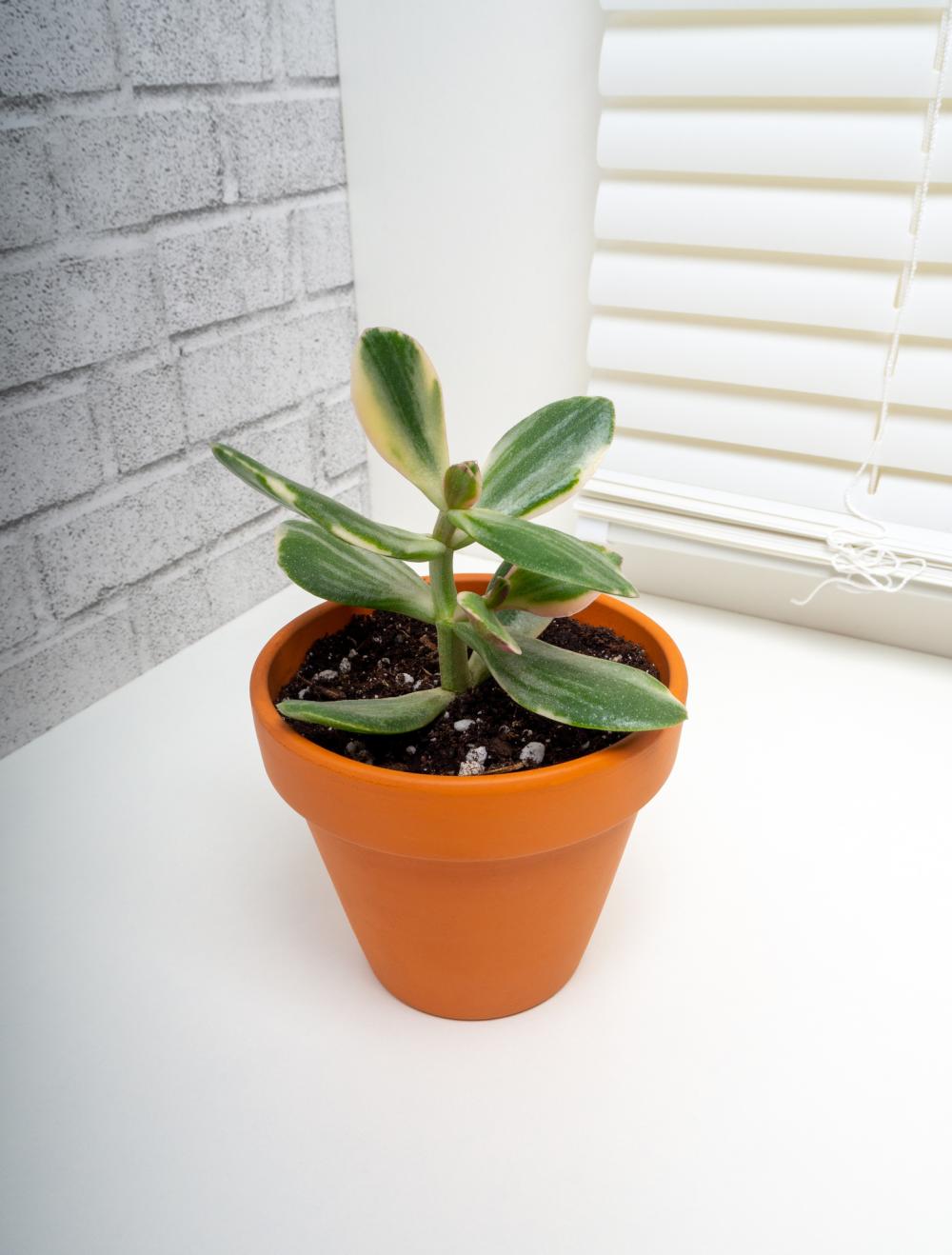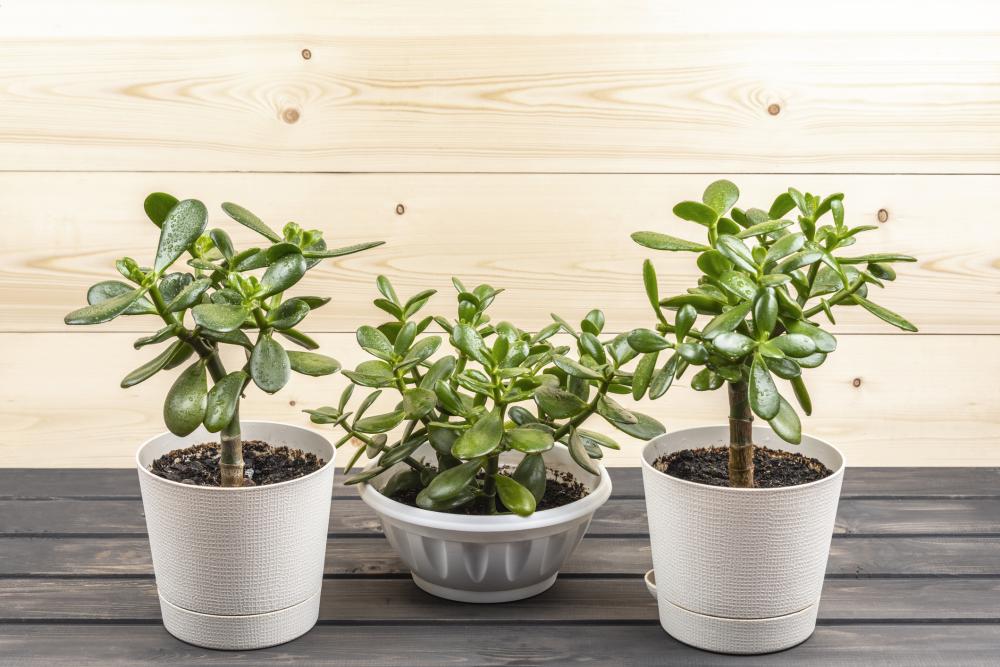9 Jade Plant Varieties For Different Households And Settings
The jade plant rules over your succulent garden. If you believe a plant can change your luck, this succulent will bring you loads of good luck. And since you can’t have too much good luck, then growing more jade plants could put you on the way to winning the lottery.
Joking aside, the beauty of the jade plant makes it indispensable in any garden, succulent or otherwise. Not to mention that the plant has so many varieties and cultivars, you’re sure to find the right succulent combination to grow for any setting.
Some jade varieties are small and compact with moderate light and watering requirements making them ideal for offices. Others have more elaborate foliage and demand as much of your time as you can spare them. The only thing you need to be wary of is the toxicity of jade plants. Keep them away from the reach of children and pets in the house.
Money Plant
One of the main attractions of the Money Plant for me at least has always been the thick and meaty leaves. To be fair that’s all the plant has to offer. Some stubby leaves grow close to the stem and create a stepping ladder in a harmonious and compact design.
But give it enough time and this jade will grow to 6 feet in the right conditions. In most settings, you would want to keep it trimmed down to about 3 feet or less. I keep mine within the one-foot limit with excessive pruning.
This jade goes by many names but the most popular one is the money plant. You’re supposed to get a windfall of good fortune if you take care of this succulent. I’m still waiting for mine. It grows well outdoors in zones 11 and 12 and has a low tolerance for wet soil. Expect to see small white or pinkish flowers in the early spring. Partial shade to indirect sun conditions are both ideal.
Crosby’s Red
If pruning the jade succulent is too much work for you, then you might want to consider Crosby’s Red. It is compact by nature and won’t grow an inch above 3 feet. If that’s too high for your succulent garden or office space, you can still manage its size with moderate pruning.
As a tropical plant, this jade thrives in zones 10 and 11 although it adapts well to indoor settings as long as you maintain high temperatures above 75 degrees F throughout the year. The leaves of the jade are unique in shape and color. They look like small tubes with bright green stems and dark red edges.
Although you can place it in a spot that gets full sun without a problem, the sensitive leaves get sunburnt easily in the hot and dry summer. So keep an eye on those red edges. If they spread to the rest of the leaf, the plant is stressed and needs less sun exposure.
Gollum
If you’re familiar with J. R. R. Tolkein and The Lord Of The Ring’s world, you might be tempted to grow this jade variety. Gollum is a fictional character with grotesque features due to his obsession with the ring. Which makes it rather unfair to name this jade variety after that character. For one thing, the jade has glossy and bright green leaves in the shapes of long and slender tubes. The clusters of tubes look more like tiny birds in a nest waiting to be fed.
The compact Gollum won’t grow above 3 feet on average. Even if you plant it outdoors, it will still keep its compact size. And because of its slow growth rate, you won’t have to worry about repotting or pruning the plant in the first 2 to 3 years of its life. Moreover, when it gets enough sunlight, the jade will produce white and pink flowers. It tolerates both full sun and partial shade and will not show stress if you forget to water it sometimes.
Ripple Jade

This variety breaks away from the other jades as it tries to blend in with almost normal-looking leaves. No tubes or Shrek ears. Just plain dark green leaves that make it look like any other plant. In fact, the wide and flat leaves look like anything but the leaves of a succulent.
On average, you can expect the Ripple Jade to reach about 4 feet after about 3 years from the time you plant it. It grows outdoors in zones 9 to 11 and does well both in full sun and partial shade. It can also deal with cold spells although it’s no match for the frost.
On rare occasions, the Ripple Jade will produce white flowers. But whether you grow it indoors or outdoors, don’t expect it to flower regularly if at all. That said, the wavy and wide leaves which maintain their green shades all year round are enough of a reason to grow and care for this low-maintenance succulent.
Minima
Minima is an exotic jade variety that gives your succulent garden a colorful shade and flair. With stubby and meaty leaves that look more brownish-green than the glossy green of the regular jade plant, it stands out. Add to that its small size. This is a truly compact jade that can barely grow above 2.5 feet. Of course when it comes to succulents, the smaller the better. So when you have a naturally diminutive jade growing in a pot, you won’t have to worry about it growing out of shape or spilling over the pot edges.
The minima won’t put you out with its care either. It hardly needs any feeding and it requires water occasionally. If you live in zones 10 and 11, you can grow it outdoors, otherwise, it can grow well indoors over a heat mat. The flowers of the Minima are small and coral pink. But it will only flower outdoors and under full sun. Another interesting aspect of this variety is that you can propagate it with a leaf cutting. You won’t even need to plant the leaf. Just drop it flat on the surface of the soil and soon roots will grow out of it.
Hummel’s Sunset
By now you’re probably used to the overdramatic naming patterns of the jade varieties in general. But Hummel’s Sunset describes this variety perfectly. The thick and short stems carry rows of coin-like leaves with colors ranging from light green to maroon. It has all the appearance of a well-maintained bonsai that you have spent years of work on.
If you grow this jade indoors, don’t expect it to grow above one foot at full maturity. However, outdoors, the succulent can reach up to 3 feet. And it will take years to finally reach that modest height. So you can add Hummel’s Sunset to your shortlist of easy-to-maintain succulents to grow.
If you’re lucky, the plant will also produce pink or white flowers in the spring. But that’s rare and, considering its highly decorative leaves, almost redundant. It also has more tolerance of cold weather than other jade varieties. You can grow it easily in zones 9 to 12. And if you prefer the leaves to have redder shades, keep the plant in a shady spot.
Harbor Lights
Harbor Lights takes us back to the familiar territories of jade succulents. The short leaves, thick and glossy surfaces, and diminutive stature. But most of all, the leaves stay dark green all year round with just a hint of brown around the edges to highlight the glossy green leaves.
The average height of Harbour Lights is 2 feet and as usual, it takes its time to get that high. It thrives in full sun but not so much in partial shade. So this is not your typical house or office plant. Nor does it do well in cooler zones so growing it outdoors should only be limited to zones 10 and 11. As for zones below 10, the only place to grow it is in a greenhouse.
The flowers of this variety are pinkish white and need 8 hours of full sun for it to bloom. Flowering is a hit-or-miss thing with the Harbour Lights. In that, it’s not very different from other tropical succulents growing in less than ideal conditions.
Lemon & Lime
At first glance, the Lemon & Lime looks just like any other houseplant. It has glossy leaves with green on the upside and creamy yellow on the underside. The stems are rather slim and the leaves are not as meaty as other jade varieties. Add to that the exceptional height of the plant which towers over 4 feet, and you have every right to mistake it for any other plant.
Sometimes, under the right conditions, the leaves will get a pinkish tinge around the tips and some of the creamy colors will creep over the top of the leaf and mix with the glossy green. And on top of that, the white flowers will start blooming without fail in the early spring. So to say that this is a highly ornamental jade variety worthy of a good corner in your succulent garden is putting it mildly.
Wildlife such as deer doesn’t have an appetite for Lemon & Lime so your plants are safe from their ravaging. You can grow this jade in zones 9 to 11 where it will get by with little watering and even fewer nutrients in the soil. However, in dry weather, you’ll need to mist the pot regularly to keep the leaves from changing color and wilting.
Crassula Perforata
We end our exotic list of jade plant varieties with this outlandish jade that looks like it comes from an alien planet. The Crassula Perforata deserves a long pause here. It’s not your average jade variety with glossy green leaves and the occasional hint of pink or maroon. This is a totally different plant with triangular leaves that look like figs threaded into a string and left to dry.
In fact, if you’re not familiar with the surprises of the jade species, you might assume the plant is an art installation placed in the middle of the nursery. When the Crassula Perforata reaches full maturity, it will reach anything from one to two feet at most. The stems tend to stretch and reach out like arms. The flowers appear at the very tip of each stem. They’re mostly pale yellow and because of their small size, they appear like buttons.
After the flowers fade, the stems dry out suddenly. Even the leaves lose their pale green and reddish colors and turn yellow. That’s your cue to prune the overgrown stems and cut them back to encourage new stems to grow in the spring.
You can plant this jade variety in zones 9 to 11 in a sunny spot. It also thrives in partial shade and doesn’t require much care beyond the occasional watering and annual pruning.

